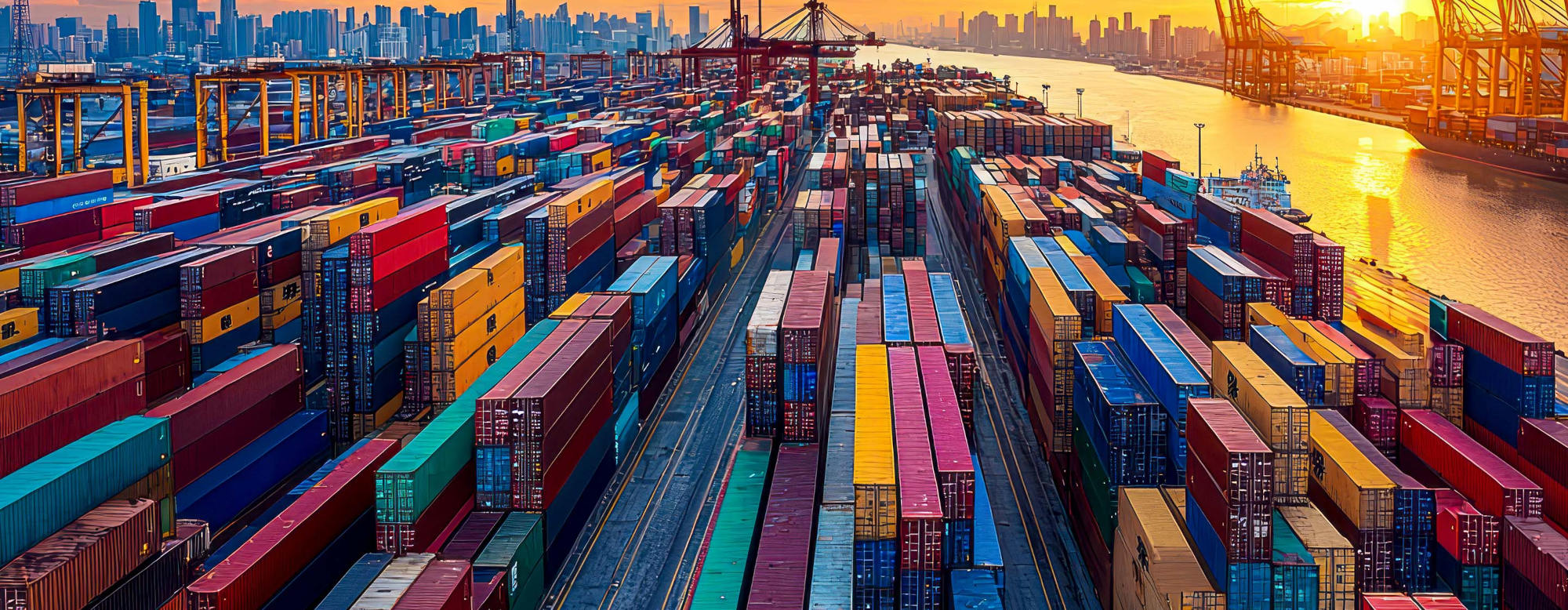
China’s “new normal”
With more news from markets in China, the world seems to be waiting for doom and gloom. And it isn’t the first time. When the Shanghai stock exchange index went into a precipitous dive last summer, followed by a 4% devaluation of the renminbi relative to the US dollar, more than a few normally sober analysts began to panic. The result was a number of dire predictions that China’s economy might be facing a potentially catastrophic decline. And here we go again, leading 2016 with more cries of panic and market turmoil. Yet, the general stance that analysts, investors and even the media have taken is overall much too pessimistic.
Far from experiencing a decline, China’s economy is trying to adjust to what amounts to “a new normal” with varying degrees of pain. From 2002 through 2008, annual growth averaged an astounding 12%. That overheated growth rate slowed to between 8% and 9% a year from 2008 through 2014, and it is currently averaging between 6% and 7%. The slower growth rate is a sign that China’s enormous economy has passed the startup stage and is beginning to mature. While it indeed is a new environment for investors to wrap their hands around, it doesn’t equate economic Armageddon. As economies develop and become more massive in size, annual growth inevitably slows – but it still grows. The annual growth in GDP in the US is around 2.2% and in the UK, it is 1.7%.
Although the inevitability of China adjusting to a sustainable normalcy like in other large modern economies should be obvious, it does not diminish the impact of last summer’s crash or today’s panic. At its low point on August 26, the Shanghai index had dropped by more than 30% and investors had lost anywhere from $4 trillion to $5 trillion dollars. This loss obviously contributed painting a dismal picture for the future of China. The real question, however, is whether the dizzying drop was due to a decline in China’s economic health, or whether investors had simply failed to accurately interpret China’s current economic evolution.
Today the world is trembling over a similar shock with levels even moving slightly lower than last August. While again investors may precipitately cry doom, it’s worth further exploring. A contributing factor to these large drops has been the Shanghai stock exchange’s stunning expansion. The index by June 2015 had swelled to 2-1/2 times its previous size of less than two years prior. The daily trading turnover quadrupled in the same time period. To a certain extent, the government welcomed and even encouraged the rapid expansion. Not only did it result in an influx of fresh capital, but it also helped offset a brief decline in exports. A more liberalized approach and the introduction of a flood of complex new investment vehicles encouraged ordinary Chinese citizens as well as foreign investors to climb on the bandwagon. Many investors had the mistaken notion that the market would continue expanding indefinitely thanks to strategic interventions by Beijing. At a certain point that approach was bound to become unsustainable and it’s time to adjust to the reality of growth that is slow and steady.
What also seemed to add to negativity around China’s economy was currency reform. China’s devaluation wasn’t substantial, but was heavily critiqued because of the relative lack of transparency. China traditionally likes to make its critical policy decisions behind closed doors in order to present a unanimous decision to the outside world. In this case, it was hard for anyone to know how far the devaluation would finally go. In the end, it did not go very far. In 2014-15, the euro’s loss in comparison to the US dollar was far more dramatic than the renminbi. Looking at several currencies in the past year, many governments have taken initiatives and few have been very open it. The bigger takeaway is that all countries including China have interfered in aims to help, not hurt their economies.
In addition, pessimistic views should be knocked down a few notches, given China’s efforts to set a roadmap for long-term growth and keep the economy strong. The question is whether they should do more or whether they are interfering too much. As far back as the Fall of 2013, China set an ambitious agenda for the Xi-Li administration encompassing reform. During that same year, the country established the One-belt, One-road strategy in an attempt to export productive capacity (not just mere merchandise) to its neighbours. Another move, that one may not think of in terms of economy, was the abolishment of the long-standing One-Child policy. While neither of these made large instant jolts on the stock market, they are strategic in the long run. More recently, the approval of the 13th Five-Year Plan in December 2015 outlines the country’s strategy moving forward. Not only does the plan further support what was done in 2013, it was developed in collaboration with top Chinese companies to reach economic growth, with a target of 6.5% for the next five years. For the investment community this is not to be taken lightly, as that target still exceeds the target of all other major economies. No other countries have such a clear strategy at the national level.
When judging the economic health of China, recent market fluctuations also have to been taken into a larger perspective. What many investors and observers miss in their analysis, is the fact that the Shanghai stock market is still relatively small when compared to China’s economy as a whole. Only 5-10 % of China’s capital is raised through equity issues, and the total free float of available shares on the market only accounts for 25% to 35% of GDP. In most developed countries that ratio is around 85% to 100%. In the US, it is 150%. So for now stocks in China have a much less drastic effect on the real side of the larger economy. The investor makeup has been too heavily focused on retail.
Although skeptics point to the still heavy reliance on state-owned industries, continuing problems with corruption and a tendency to intervene at critical moments, the fact is that China is making steady progress from a heavily socialized economy to a free market with all the volatility and risks that that entails. Back in 2001, state-owned enterprises accounted for roughly a third of China’s GDP. Today the figure is 25% of GDP. That said, state owned enterprises still account for 60 million jobs. China is evolving relatively quickly, but it needs to do so at a measured pace.
Business transformation is underway and the landscape is changing in a way that also contributes to China stabilizing as a modern economy. The key for investors is to look at China’s business development on a sector by sector basis. This will be a different and more in-depth approach to finding the right places for growth both on and off the stock market. Like most countries, China needs to navigate through market disruption brought on by technological innovation. And while, as in any economy, there are and will be failures, there are many successes. New “Taobao” villages, innovatively use e-commerce via the Internet to supply goods to booming rural provinces. In doing so, they have created a dynamic new market filled with opportunity. And that success is not an isolated phenomenon. China is fast becoming a dominant player in a widening range of new technologies from alternative energy to new battery technologies. Internet giants, Alibaba and Tencent, dwarf their western competition. China’s Shenzhen-based, consumer drone manufacturer, DJI, currently holds 70% of the world market, China’s smartphone manufacturer, Xiaomi, founded in 2010, sold over 60 million smartphones in 2014. It is providing heavy competition in Asian markets to Apple’s iPhone. That takes on a new significance when one realizes that Apple currently depends on China for a fifth of its sales. And these are just examples. The business sector, like the economy is evolving, with some sectors faster than others. It should be noted that growth is not evenly distributed.
The bottom line is that while markets will fluctuate, pessimism, especially by investors is exaggerated when speaking of China’s overall economic health. It is abnormal for any country to sustain double digit growth for a long period of time. Five to seven percent growth for the second largest economy (the first in PPP) is still commendable. Both China and the world need to readjust to this new normal.
This article first appeared in Fortune.
Winter Nie is a professor of operations and service management at IMD. She teaches in the Orchestrating Winning Performance (OWP) program.
Research Information & Knowledge Hub for additional information on IMD publications
To understand America’s aggressive shift on trade, you must first grasp the silent, slow building, decades-long erosion of American middle-class prosperity. This shift began well before President Trump and will outlive him. It is rooted in the col...
After more than a decade of war and isolation, Syria is edging back into the global economy. The signs are familiar: commercial flights have resumed, sanctions are being eased and its debts are being cleared. Gulf investors are circling. Infrastru...
The Great Trade Hack by Richard Baldwin explains how Trump’s 2025 tariff blitz wasn’t economic strategy. It was grievance politics. Tariffs, Baldwin shows, are political placebos that won’t fix the U.S. economy but could fracture the global trade ...
On 12 May 2025, China and the United States released a joint statement that ended the recent escalation in tariffs. For 90 days each agreed to lower their tariffs by 115%. This only applies to import taxes imposed since 2 April 2025—all prior tari...
This paper presents a compact and intuitive framework that consolidates, simplifies, and extends results on the links between technology, trade, and labour market outcomes. It makes three main contributions. First, it presents closed-form solution...
Until the late 19th century, states raised most of their government revenues from import tariffs. This column asks whether the practice could work today. A side effect of taxes is that they discourage the economic activity that they are assessed o...
in Gensler, Gary (Ed.); Johnson, Simon (Ed.); Panizza Ugo (Ed.); Weder di Mauro, Beatrice (Ed.) / The Economic Consequences of The Second Trump Administration: A Preliminary Assessment, pp. 239-244 / PAris: CEPR Press, 2025
Research Information & Knowledge Hub for additional information on IMD publications
Published by International Institute for Management Development ©2025
Research Information & Knowledge Hub for additional information on IMD publications
Research Information & Knowledge Hub for additional information on IMD publications
in I by IMD
Research Information & Knowledge Hub for additional information on IMD publications
Research Information & Knowledge Hub for additional information on IMD publications
Research Information & Knowledge Hub for additional information on IMD publications
Research Information & Knowledge Hub for additional information on IMD publications
in Journal of International Economics May 2025, vol. 155, 104065, https://doi.org/10.1016/j.jinteco.2025.104065
Research Information & Knowledge Hub for additional information on IMD publications
in I by IMD
Research Information & Knowledge Hub for additional information on IMD publications
Research Information & Knowledge Hub for additional information on IMD publications





